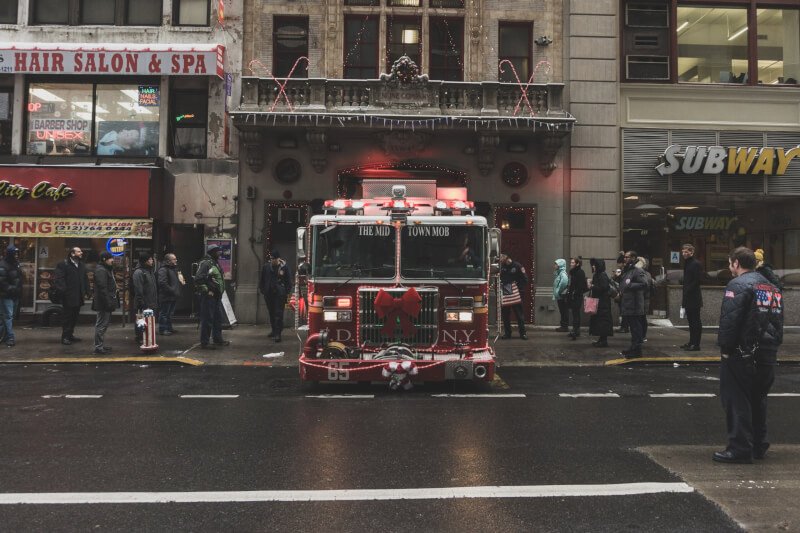In need of some survival tips for the most unimaginable and bizarre situations? Look no further than “The Complete Worst-Case Scenario Survival Handbook.” This ultimate guide provides you with all the essential knowledge and step-by-step instructions to navigate through life’s most challenging and unexpected moments. From escaping quicksand to surviving a bear attack, this book has got you covered with its practical advice, presented in a friendly and approachable tone. So get ready to face any worst-case scenario with confidence and be prepared for whatever comes your way.

Overview
In this comprehensive article, we will explore various scenarios and provide valuable information and tips on how to survive in the face of natural disasters, accidents and emergencies, physical threats, social and political turmoil, financial crises, health emergencies, technological disasters, environmental catastrophes, and personal crises. Whether you find yourself in the midst of an earthquake, a wildfire, a financial collapse, or a pandemic, this guide will equip you with the necessary knowledge and strategies to navigate through these challenging situations and emerge stronger and more resilient. Remember, when it comes to survival, preparation is key, and being well-informed can make all the difference.

Surviving Natural Disasters
Dealing with Earthquakes
Earthquakes can strike suddenly and with devastating force, causing immense damage and endangering lives. To survive an earthquake, remember to “Drop, Cover, and Hold On.” Drop down to your hands and knees, take cover under a sturdy piece of furniture, and hold on until the shaking stops. After the earthquake, be cautious of potential aftershocks and check yourself and others for injuries. Have an emergency kit prepared with essential supplies such as food, water, and first aid supplies.
Weathering Hurricane and Tropical Storms
When faced with the powerful forces of hurricanes and tropical storms, it is crucial to have a plan in place to ensure your safety. Stay informed about weather updates through reliable sources and follow evacuation orders if necessary. Protect your home by securing windows and doors, and consider reinforcing your roof. Stock up on essential supplies such as non-perishable food, water, flashlights, and batteries. Have a communication plan established with your loved ones and know the location of nearby shelters.
Surviving Tornadoes and Thunderstorms
Tornadoes and thunderstorms can strike with little warning, leaving destruction in their wake. If you find yourself in the path of a tornado, seek shelter in a windowless interior room or a designated storm shelter. Avoid windows and protect your head with a mattress or heavy blankets. During thunderstorms, stay indoors and away from electrical appliances and water sources. If caught outside, seek shelter in a low-lying area away from tall objects and lie flat on the ground, hands covering your ears.
Coping with Floods
Floods can occur due to heavy rains, overflowing rivers, or coastal surges. If a flood warning is issued, move to higher ground and avoid driving through flooded areas. Be cautious of fast-moving water, as it can easily overwhelm even the strongest swimmers. Create a flood emergency kit with essentials such as a battery-powered radio, food, water, and important documents. Familiarize yourself with evacuation routes in your area and have a plan for reuniting with family members if separated.
Navigating Forest Fires
In the face of a raging forest fire, your top priority should be your safety. If evacuation orders are given, leave immediately and follow the designated routes. If trapped by a fire, find a body of water such as a pond or lake to take shelter in. Protect your airways by covering your nose and mouth with a damp cloth or a respirator mask. Stay low to the ground, as heat and smoke rise. Carrying a fire extinguisher and having a well-maintained defensible space around your property can also help prevent fires from spreading.
Handling Volcanic Eruptions
Volcanic eruptions can unleash a variety of hazards, including lava flows, ashfall, pyroclastic flows, and lahars. Stay informed about volcano alerts and heed evacuation orders if necessary. Protect your respiratory system by wearing a dust mask or covering your face with a cloth. Stay indoors during ashfall and keep windows and doors closed. If caught outside during an eruption, seek shelter in a vehicle or a sturdy building. Be prepared for potential power outages and have an emergency kit stocked with essential supplies.
Surviving Tsunamis
Tsunamis can be triggered by underwater earthquakes, volcanic activity, or landslides and can unleash powerful and destructive waves along coastal areas. If you are in a tsunami zone, familiarize yourself with evacuation routes and move to higher ground as soon as a tsunami warning is issued. If you are unable to escape, seek shelter in an upper-level of a sturdy building or climb to higher ground. Avoid low-lying coastal areas and be cautious of potential aftershocks.
Dealing with Droughts
Droughts can have severe impacts on water availability, agriculture, and overall well-being. To survive a drought, conserve water by taking shorter showers, fixing leaks, and being mindful of water usage. Establish a storage system for rainwater to use for non-potable purposes. Minimize outdoor water usage and opt for drought-tolerant landscaping. Stay informed about local water restrictions and implement water-saving strategies within your household. Be prepared for food shortages and consider growing your own fruits and vegetables.
Preparing for Landslides and Avalanches
Landslides and avalanches can be triggered by heavy rainfall, earthquakes, or unstable slopes. If you live in a high-risk area, familiarize yourself with early warning systems and evacuation routes. Be vigilant for signs of slope instability such as cracks in the ground or unusual tilting of trees or structures. Avoid building or residing in areas prone to landslides or avalanches. If caught in a landslide or avalanche, try to move to the side and seek shelter behind sturdy objects. Carry a whistle or other signaling device to alert rescuers of your location if trapped.
Escaping from Sinkholes
Sinkholes, sudden collapses of the ground surface, can pose significant threats to safety. If you find yourself near a sinkhole, move away from the area immediately. Avoid getting too close or attempting to enter a sinkhole, as the ground can be unstable and cave in further. Contact local authorities to report the sinkhole and seek guidance on necessary precautions. Keep in mind that sinkholes can be unpredictable, and it is essential to stay informed about any potential risks in your area.

Surviving Accidents and Emergencies
Responding to Vehicle Accidents
Vehicle accidents can occur in an instant, and knowing how to respond can save lives. If you witness or find yourself in a car accident, prioritize safety by activating hazard lights, moving to a safe location if possible, and calling emergency services. Assess the injuries of those involved and provide first aid if necessary, but avoid moving anyone who may have a spinal injury. Cooperate with law enforcement and provide accurate information.
Dealing with Fires and Explosions
Fires and explosions can result in chaos and grave danger. In the event of a fire, utilize the “Stop, Drop, and Roll” technique if your clothing catches fire. If trapped in a burning building, stay low to avoid smoke inhalation and cover your nose and mouth with a cloth. Exit using designated fire exits or windows if necessary, but avoid opening doors that feel hot to the touch. During an explosion, seek cover behind sturdy objects and protect your head and vital organs.
Surviving Building Collapses
Building collapses can occur due to natural disasters, structural failures, or terrorist attacks. If a building collapse occurs, take shelter under a sturdy table or desk to protect yourself from falling debris. Cover your mouth with a cloth to minimize inhalation of dust and debris. Tap on pipes or other objects to alert rescuers of your location if trapped and use a whistle or flashlight to signal for help. Stay calm and conserve energy until rescue personnel arrive.
Handling Gas Leaks and Chemical Spills
Gas leaks and chemical spills can lead to hazardous situations and potentially harm individuals nearby. If you smell gas, leave the area immediately and avoid any sources of ignition such as open flames or electrical switches. Contact your utility company and emergency services to report the gas leak. In the event of a chemical spill, move to a well-ventilated area away from the spill and follow evacuation procedures if necessary. Avoid contact with the spilled substance and seek medical attention if exposed.
Escaping from Raging Wildfires
When confronted with a rapidly spreading wildfire, your safety should be the top priority. Follow evacuation orders and leave the area as soon as possible. If evacuation is not possible, find a clear area away from vegetation and seek shelter in a building. Close all windows and doors to prevent the entry of smoke. Stay low to the ground and cover your nose and mouth with a cloth to filter the air. Be prepared with an emergency kit and keep important documents in a fireproof safe.
Surviving Plane Crashes
Plane crashes, although rare, can be catastrophic. If you find yourself in a plane crash, your chances of survival may depend on your preparedness and quick thinking. Pay attention to the safety briefing when onboard a plane and familiarize yourself with the aircraft’s emergency exits. In the event of a crash landing, assume the brace position and secure any loose objects. Move quickly to exit the plane, following the illuminated exit signs if visible, and leave all personal belongings behind.
Coping with Train Derailments
Train derailments can result in serious injuries and fatalities. If you are on a train during a derailment, stay seated and brace yourself by placing your feet flat on the floor, leaning forward, and placing your hands over your head. Avoid moving around the train car, as debris and shifting objects may pose dangers. Follow the instructions of train personnel and prioritize the safety of children and vulnerable individuals. Wait for rescue personnel to arrive and assist with evacuation.
Escaping from Sinking Ships
In the event of a ship sinking, your ability to respond swiftly can be critical. Locate the nearest life jacket and put it on immediately. Familiarize yourself with the ship’s evacuation procedures and the location of lifeboats or life rafts. If the ship starts to capsize or sink, remain calm and follow the instructions of crew members. Evacuate the ship using the designated evacuation routes and avoid jumping into the water unless it is absolutely necessary.
Dealing with Nuclear Accidents
Nuclear accidents can result in radiation exposure and pose significant health risks. In the event of a nuclear accident or radiation emergency, listen to advisories and instructions from local authorities. If advised to evacuate, do so promptly and follow designated evacuation routes. Close and seal windows and doors to prevent the entry of radioactive particles. If you are unable to evacuate immediately, find shelter in a basement or an interior room with minimal windows.



